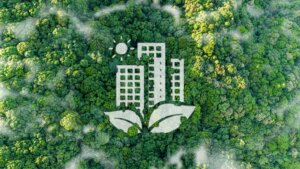
The Rise of Green Building: How Multifamily Developers are Embracing Sustainability
Sustainability is no longer just a trend—it is a necessity in real estate development. As cities expand and environmental concerns grow, multifamily developers rethink how they design and construct buildings. Renters today are also driving this shift, seeking homes that offer energy efficiency, lower utility costs, and a smaller environmental footprint.
But going green isn’t just about installing solar panels or using recycled materials. So, how exactly are multifamily developers making their buildings more sustainable?
In this article, we’ll explore key strategies shaping the future of green housing. Keep reading to discover how innovative solutions are redefining modern multifamily developments.
Energy-Efficient Building Design and Installation Smart Systems
Reducing energy use starts with smart building design. Developers should optimize layouts to improve natural light and ventilation, reducing reliance on artificial lighting and air conditioning. Well-placed windows, reflective roofing, and better insulation help control indoor temperatures, cutting energy consumption significantly.
Smart technology also plays a big role. Many new buildings feature smart thermostats, LED lighting, and high-efficiency HVAC systems. These systems automatically adjust based on occupancy and outdoor conditions, leading to energy savings of up to 30%. Some developments go further by integrating solar panels, battery storage, and wind energy, reducing reliance on the power grid.
For renters, these features mean lower electricity bills and a more comfortable living space. On the other hand, developers benefit from reduced operating costs and higher property value. Energy-efficient buildings are better for the environment and make financial sense in the long run.
Use Sustainable Construction Materials
Building sustainably starts with choosing the right materials. Many developers now prefer FSC-certified wood, recycled steel, and low-VOC paints. These materials reduce environmental impact and improve indoor air quality. Precast and modular construction is also becoming more popular. This method reduces construction waste by up to 90% while speeding up project timelines.
Another approach is green roofing and permeable pavement. Green roofs help insulate buildings and reduce urban heat island effects, while permeable pavement allows rainwater to drain naturally. These solutions improve sustainability without adding major costs. So, developers who invest in sustainable materials often see long-term savings.
Follow Water Conservation Strategies
Water efficiency is a critical part of sustainable development. Multifamily properties consume vast amounts of water, but new technologies help reduce waste. Many developers are installing low-flow faucets, dual-flush toilets, and water-efficient dishwashers. These fixtures cut water usage by up to 40%, leading to lower utility costs for both owners and tenants.
Outdoor landscaping is another area of focus. Traditional lawns require large amounts of water, but drought-resistant plants and native vegetation need far less. Smart irrigation systems, which adjust watering schedules based on weather data, help save even more water.
Some developments also use rainwater harvesting and greywater recycling. These systems collect and reuse water for irrigation or flushing toilets, reducing demand for municipal supplies. With rising water costs and increasing droughts, conservation strategies are becoming essential for responsible development.
Maximizing the Benefits of Green Buildings: More Than Just Construction
Building an eco-friendly property is a step in the right direction, but sustainability efforts must go beyond construction to maximize long-term benefits. Read below to learn:-
-
Reach Eco-Conscious Renters
A green building alone won’t attract eco-conscious renters unless they know about its benefits. So, it is essential to use multifamily marketing services to promote and build a brand that resonates with environmentally conscious individuals. But make sure you choose a specialized expert who can craft compelling social media narratives, engage website content, and implement targeted digital campaigns. By embracing strategic marketing, developers can stand out in the competitive multifamily market, attract high-quality renters, and build a strong reputation for green living.
-
Obtain Sustainability Certifications for Credibility
Certifications like LEED, ENERGY STAR, or WELL Building Standard add credibility to a green building. These certifications signal to renters and investors that a property meets high environmental standards. Certified properties often enjoy higher occupancy rates, reduced operational costs, and increased resale value.
-
Maintain and Upgrade Green Features Regularly
Sustainability isn’t a one-time effort—it requires consistent maintenance and upgrades. Regular inspections of solar panels, insulation, HVAC systems, and smart devices ensure they remain efficient. As new technologies emerge, upgrading to more advanced energy-efficient systems can keep the property competitive in the market.
-
Offer Smart Waste Management Solutions
Implementing comprehensive recycling and composting programs helps reduce landfill waste and encourages sustainable habits among tenants. Adding waste-sorting stations, e-waste recycling bins, and organic waste composting areas creates a greener community. Property-wide waste reduction initiatives also improve sustainability certifications and attract eco-conscious renters.
Last Words
Sustainability is no longer a choice—it’s the future of multifamily development. If you’re planning a new multifamily project, now is the time to think green. By integrating these strategies, you can create modern, sustainable communities that attract renters, reduce costs, and benefit the environment. The shift toward greener living is here—are you ready to be part of it?